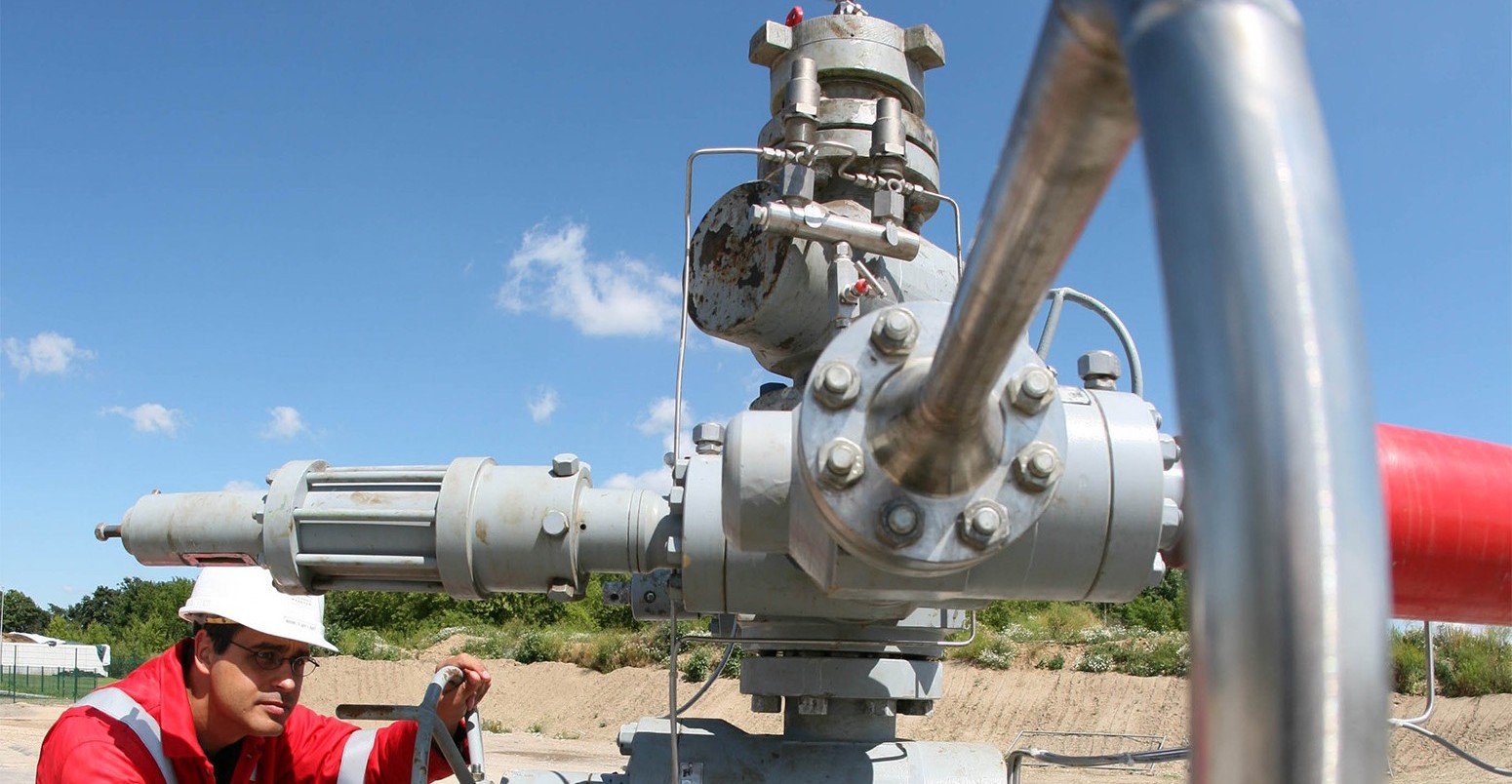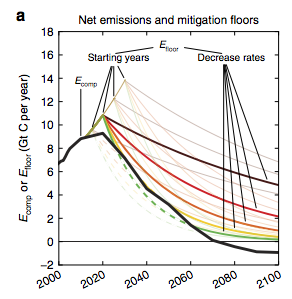
Two degree climate target not possible without ‘negative emissions’, scientists warn
Roz Pidcock
08.03.15Roz Pidcock
03.08.2015 | 5:05pmAll of our options for keeping warming below 2C above pre-industrial temperatures now involve capturing carbon dioxide and storing it underground – a technology that doesn’t yet exist on a large scale, according to new research.
The study , published today in Nature Communications, argues that ‘negative emissions’ alone, in the absence of conventional mitigation, are unlikely to achieve the 2C goal.
And in all but the most optimistic cases, staying below 2C requires capturing and storing carbon in amounts that exceed the capabilities of current technology, say the researchers.
Ahead of a major international climate summit in Paris, the study makes an interesting contribution to the debate about the role of negative emissions in meeting the 2C target.
Budgets
In December, global leaders will gather in Paris to agree a deal for capping global temperature rise at 2C above pre-industrial levels – the internationally agreed target.
For any given temperature target, there is a finite amount of carbon that can be burned before the chances of staying below that target become minimal. This is known as a carbon budget.
In its latest report, the Intergovernmental Panel on Climate Change (IPCC) said that to have a reasonable chance of staying below 2C, total emissions from all human activity must not exceed 1,000bn tonnes of carbon (or gigatonnes of carbon, GtC).
The world is currently not on course to meet this target and there are two options for how to get ourselves back on track, says today’s paper.
The first is to produce fewer emissions, which means burning fewer fossil fuels. This is what’s commonly referred to as conventional mitigation.
The other is to capture fossil fuel emissions before they enter the atmosphere, or to suck them directly out of the air – a technique known as carbon dioxide removal. A third possibility sometimes proposed is to artificially engineering parts of the climate system, such as the oceans, to take up more carbon.
Collectively, the new paper calls these “negative emissions” technologies.
(Note that this is not shorthand for what the IPCC refers to as “net negative emissions”. In its latest report, the IPCC said: “Net negative emissions can be achieved when more GHGs are sequestered than are released into the atmosphere (e.g., by using bio-energy in combination with carbon dioxide capture and storage).

Laboratory studies help progress the field of carbon storage, by characterising the chemical signatures that result when certain types of rocks are exposed to carbon dioxide. Credit: Idaho National Laboratory | Flickr
Trade-off
For a given temperature target, conventional mitigation and negative emissions are tightly linked. If we do more conventional mitigation, we need to rely less on negative emissions.
Essentially, today’s study examines the possibilities for how this trade off could work under a 2C budget.
The team uses complex climate models, known as Earth System Models, to look for scenarios where greenhouse gas concentrations are compatible with the IPCC’s RCP2.6 scenario – the only one that keeps global temperature rise below 2C.
The models take into account not only how the amount of carbon dioxide in the air changes, but also how the ocean and land responds to rising temperatures and greenhouse gases.
The team then compare the ‘allowable’ carbon emissions in these scenarios with how far conventional mitigation could realistically cut our current emissions. In each case, that let them work out how much negative emissions would be needed to pick up the slack.
The team examined a wide range of possibilities for mitigation, with emissions cuts beginning at different times and continuing at different rates.
The thick black line in the graph below represents an emissions trajectory compatible with 2C. The coloured lines show the various rates of conventional mitigation in the study, and the different starting points. The gap between each coloured line and the black line effectively represents the amount of negative emissions required to balance the budget in each case.
One emissions trajectory compatible with 2C (thick black line) and various rates of conventional mitigation considered in the study (coloured lines). Source: Gasser et al., (2015).
Capture and storage
In the study’s most optimistic scenario, emissions cuts of 5% per year begin in 2015. Even so, we’d need to capture a maximum of 0.5-3GtC per year for at least a decade to stay below 2C, the paper says. In the study’s worst case scenario, where emissions cuts of 1% per year begin in 2030, that figure rises to 7-11GtC per year. This is the same order of magnitude as global carbon dioxide emissions in 2012 from fossil fuel burning, the paper notes.
Understanding how much carbon capture is needed to stay under 2C is critical, says the paper, because this carbon also somehow has to be stored.
Coming back to the best-case mitigation scenario, the paper works out we’d need 25-100GtC of storage space by 2100, rising to 50-250GtC by 2300. Again, those figures rise considerably in the worst-case scenario, to 450-800GtC by 2100 and 1000-1600GtC by 2300.
Just supposing we could could capture all the carbon required, where would we put it?
One suggestion is to store carbon dioxide underground in depleted oil and gas reservoirs and coal seams. Globally, it’s thought these could hold 300-350GtC. Saline aquifers could hold a further 1,100-6,300GtC. Together, these far exceed the amount the study says we’ll need. But, the paper cautions:
“However, these capacity values do not account for technical feasibility, economic costs and social acceptability, which indicates the actual storage capacity is likely to be lower.”
Feasibility
All pathways consistent with 2C involve negative emissions to some extent, according to the new study. The question is not “if”, but “how much”. The paper notes:
“If there was no constraint of any sort, one could imagine ever-growing positive emissions from fossil fuel burning, compensated by even stronger negative emissions.”
But there are important questions about feasibility, say the authors, given that carbon capture and storage technology does not exist on a large scale. In all but the most optimistic cases, the study finds negative emissions requirements that “have not yet been shown to be achievable”.
For this reason, the paper continues:
“Negative emissions alone are unlikely to be the panacea that will limit global warming below 2C, and that conventional mitigation – that is, reduced consumption of fossil fuels – should remain a significant part of any climate policy aiming at this target.”
A stark picture
There are a number of important things to note about the new study.
First, it assumes no leakage from potential storage reservoirs, which, if it occurred, would increase the amount of negative emissions needed to stay within budget for 2C.
The study also doesn’t account for the potential release of methane – a powerful greenhouse gas – from thawing permafrost to the atmosphere, which would tighten the 2C budget even further. The authors also note:
“Choosing additional climate targets other than the increase in global mean temperature (for example, limiting ocean acidification) may also reduce compatible emissions and again increase gross negative emissions requirements.”
All of this suggests today’s study could underestimate the amount of negative emissions required to stay below 2C. The figures are also at the lower end of those calculated by Integrated Assessment models (IAM’s), the paper explains:
“This logically follows our approach of always choosing conventional mitigation over negative emissionsâ?¦Conversely, in integrated assessments, negative emissions may be chosen over conventional mitigation at any time, depending on which is found to be more economical to develop.”
In other words, the study does a simple physical analysis of the trade off between conventional mitigation and negative emissions technologies in a 2C world and makes no assumptions about changing economic, technological and sociopolitical contexts, the authors note.
The paper also makes assumptions about mitigation that differ to other studies. For example, it assumes an exponential rate of mitigation, where the most effective methods are applied first, whereas other studies have assumed a constant rate of mitigation each year.
For all these reasons, it’s important not to assume any single study is a faithful representation of our future reality. But as an insight into what it means to talk about 2C and how the target is now inextricably linked to negative emissions, today’s paper paints a stark picture.
Main image: Part of a carbon capture pilot project (CCS) in Ketzin, Germany.
Gasser et al., (2015) Negative emissions physically needed to keep global warming below 2°C. Nature Communications DOI: 10.1038/ncomms8958
-
Two degree climate target not possible without 'negative emissions', scientists warn


